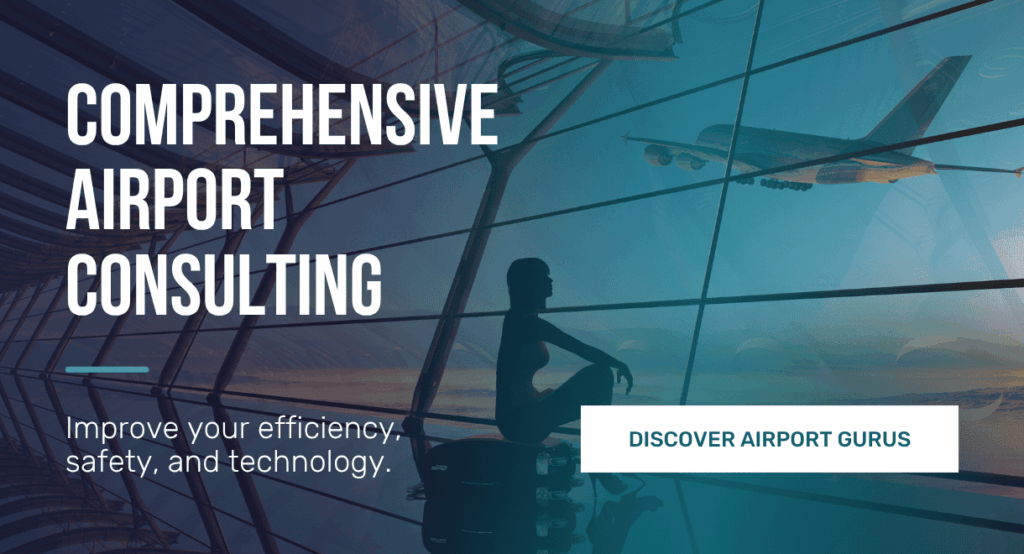Airports are the busiest transit hubs in the world, serving millions of passengers every year. Every day, travellers must pass through security screening, and for airport management, balancing safety with the expectation of a pleasant journey is no easy task.
Finding the middle ground is therefore essential since long wait lines and slow security procedures can impact passengers’ overall travel experience. The other alternative is not to have security procedures, which will certainly lead to increased risk for passengers and the aviation sector at large.
The secret is to put policies and procedures into place that improve security without sacrificing the quality of the traveller experience. So, what are the measures airports can put in place to enhance security while ensuring passengers enjoy a safe, seamless, and stress-free journey?

Streamlining Security Checkpoints
Security screening is the first step of every passenger’s journey, and it often sets the tone for the entire trip. Unfortunately, it is also one of the most stressful parts of going through an airport. Long queues, removing shoes and electronics, and inconsistent procedures from one airport to another leave travellers frustrated and drained.
Airport managers can ease this process by making checkpoints more efficient and passenger-friendly. Streamlined screening reduces congestion, and consistency in airport security protocols minimises confusion that passengers experience.
By having signage and directional information provided in different languages, passengers can have an easier time completing the security processes without misunderstandings.
Implementing a Layered Security Approach
Even though screening checkpoints are the most obvious aspect of airport security, there are several more essential layers functioning behind the scenes that many people don’t see. These airport security systems create an impenetrable barrier that can withstand even the worst security threats better than any one layer could on its own. In the event of a terrorist attack, the numerous hurdles that this system creates significantly increase the chances of detecting, delaying, or stopping a threat.
For travellers, this layered security approach doesn’t just increase safety; it also improves the overall airport experience. Instead of relying on a single intensive checkpoint, security measures are distributed across several stages, reducing bottlenecks, minimising long lines, and making movement through terminals more seamless.
Using Advanced Technology
Since the 9/11 terror attack, technology has increasingly become an integral part of airport security, driving continuous innovation. Today, airports are embracing advanced solutions that not only strengthen safety but also improve efficiency.
Modern screening technologies, such as explosive detection systems, millimetre-wave scanners, and CT scanners, are reshaping traditional screening processes, making checkpoints quicker, accurate, and less stressful. As a passenger, you no longer need to open your bags or go through the time-consuming and invasive physical pat-downs.
Beyond checkpoints, airports are upgrading surveillance through biometric systems like facial recognition and high-definition cameras. These technologies enhance efficiency by reducing the need for passengers to repeatedly present their travel documents.
Some airports have even gone a step further to use AI video analytics in their surveillance systems to identify suspicious behaviours, conduct people-flow analytics, and improve situational awareness throughout the terminals.
Regular Staff Training and Education
Even the most sophisticated systems require skilled personnel to run them. Airport security officers serve as the first and last line of defence, responsible for interpreting data, managing technology, and handling high-pressure situations.
To do this effectively, they need to be trained continuously and keep themselves informed about regulatory and technological changes. This is one of the valuable roles continuous training plays for security personnel.
Through continuous training, security personnel learn how to deal with the ever-changing threats, handle the challenges of managing millions of passengers, and make sound decisions under pressure.
Security officers also develop the soft skills needed for day-to-day encounters with passengers, helping them remain calm and professional in easily aggravated situations. This reduces tension, encourages cooperation, and ensures a smooth passenger flow while upholding strict safety standards.
Apply Risk-Based Screening Practices
Screening passengers with a “one-size-fits-all” model has proven to be no longer efficient. Risk-based models are gaining traction by tailoring security checks according to passenger and cargo risk profiles. This allows low-risk travellers to enjoy a faster, more streamlined process while ensuring that higher-risk individuals undergo additional scrutiny.
By focusing on the profiles that pose the most risk, airports can enhance overall efficiencies, get rid of congestion, and provide a better customer service experience without lowering security. Most importantly, risk-based screening adapts in real time, leveraging evolving data and intelligence to stay ahead of emerging risks.
airport security management system
airport security systems companies
Conclusion
When it comes to airport security, nothing should be taken for granted. As airports become busier and more complex, they need to be proactive in their security measures and undertake the necessary processes to the highest standards to maximise security.
At Airport Gurus, we understand how intimidating security procedures can be, and our mission is to simplify and improve them so that you can focus on running your airport more efficiently.
Our team of experts can help you with every step, whether you are looking to improve passenger screening, cargo security, or to integrate airport technology solutions. To learn how we can help elevate your airport security operations, simply contact Airport Gurus today